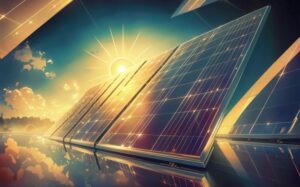Hydrogen for power | Samsung wins $100m deal to build ammonia facilities for co-firing at controversial new coal plant

Samsung C&T has signed a 140bn-won ($103m) contract to build facilities for unloading, storing and transporting ammonia at the controversial 2.1GW Samcheok coal-fired power plant in eastern South Korea.
Operator Korea Southern Power Company plans to burn a mix of 20% ammonia and 80% coal later this decade at the almost-completed plant, which has faced protests since its inception was first announced in 2014.
Samsung will carry out all of the engineering, procurement and construction (EPC), including a double-walled storage tank capable of storing 30,000 tonnes of ammonia and a pier capable of allowing NH3 to be imported from overseas. The work is scheduled to be completed in July 2027, while construction of the coal plant is due to conclude this month.
Korea Southern Power (KOSPO) — a subsidiary of the country’s largest utility, Korea Electric Power Corporation (KEPCO), which is majority-owned by the government — had first announced plans to burn ammonia at the plant in July 2022.
Ammonia is produced from hydrogen, but there is no word as to whether that H2 will be green (made from renewables), blue (made from coal or gas with CCS), or grey (made from unabated coal or gas).
However, in 2023, the plant’s owner, Posco Energy (now Samcheok Blue Power), said it was exploring a deal with CF Industries to import blue ammonia for the project from Louisiana.
Article continues below the advert
KOSPO says the move will reduce greenhouse gases by 1.1 million tonnes annually, but this would only strictly be true if green ammonia was used, with the Haber-Bosch process used to combine hydrogen with nitrogen from the air being powered by renewable electricity.
The fact that vast quantities of highly polluting coal would still be burned at the facility — which is not due to close until 2047 — was not mentioned by any of the companies involved.
The ammonia infrastructure “is significant as the first step in the transition to clean fuel, and we plan to successfully complete the project and contribute to reducing national greenhouse gases”, said Shim Jae-won, vice-president of KOSPO’s technology and safety division.
Critics have long labelled any attempts to co-fire ammonia with coal as “greenwashing”, pointing out that emissions would still be higher than from similar-sized natural-gas-fired power plants, while giving the green light to allow the burning of carbon-rich coal for decades to come.
In 2022, research house BloombergNEF released a report into ammonia/coal co-firing, which concluded that co-firing 50% green ammonia with coal would produce higher carbon emissions than a gas-fired power plant — and would be more expensive than any form of renewable energy backed with batteries.
Using renewable energy to produce green hydrogen — and to drive the energy-intensive Haber-Bosch process that combines H2 with nitrogen in the air to make ammonia — means that as little as 18% of the original renewable energy content would be utilised when it is burned at a coal power station, inevitably making it an expensive option.
According to non-profit organisation Transition Zero, “co-firing ammonia [with coal] could even be worse for the environment than burning unabated coal due to the very high embedded upstream [methane] emissions [when using fossil gas to make grey ammonia] and energy losses from production of hydrogen and NH3”.
The world’s first co-firing of ammonia with coal began last week in Japan, in a pilot project at the 4.1GW Hekinan coal-fired power plant, which is using grey NH3.






